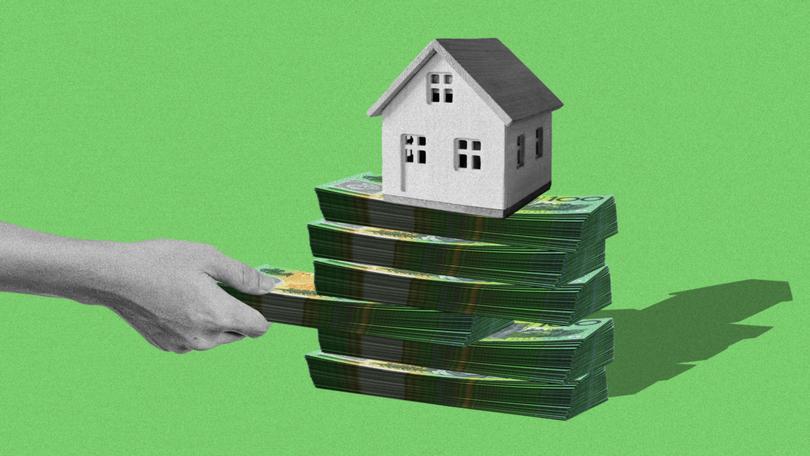DAVID KOCH: Don’t wait for a rate cut, the time to take control of your finances is now

When the Reserve Bank speaks, every borrower listens. This week the RBA had a lot to say and it wasn’t good news for borrowers.
There has been a huge amount of analysis about what the Reserve Bank board minutes from their last meeting contained as they decided to keep official interest rates on hold for the sixth straight meeting and at a 12 year high of 4.35 per cent.
But I don’t think there needs to be any analysis whatsoever. The comments from the minutes themselves paint a really clear picture of the RBA’s thinking.
Sign up to The Nightly's newsletters.
Get the first look at the digital newspaper, curated daily stories and breaking headlines delivered to your inbox.
By continuing you agree to our Terms and Privacy Policy.“Holding the cash rate target steady at its current level for a longer period than currently implied by market pricing may be sufficient to return inflation to target in a reasonable timeframe, but that the board will need to reassess this probability at future meetings.”
Says it all really, doesn’t it?

The US Federal Reserve is likely to cut America’s official interest rate next month but don’t think we will follow any time soon.
At this stage, barring a sharp rise in unemployment or a surprise sharp drop in the CPI, the RBA won’t cut rates until well into 2025.
What you’re experiencing now will stay like it is for at least another six months. If you’re finding it tough to make ends meet and balance the cost of living with high mortgage repayments, the battle will continue for some time.
It’s a depressing prospect.
It’s time to do something about it yourself. Don’t wait for the RBA to deliver interest rate relief. Take control and do it yourself.
Here’s a strategy to follow.
Try to negotiate a lower rate
Just one-in-three Aussie mortgage holders have tried to negotiate a lower rate this year. Amazingly, 70 per cent of those that called their lender said they were successful in securing a discount. It shows a simple phone call could end up saving you thousands.
Ask for financial hardship assistance
Consider contacting your lender if you’re struggling to pay utility bills, energy bills, home or car insurance premiums — even if you’re in the middle of making a claim. There are hardship programs available for bills outside of your mortgage repayments.
But if you’re still struggling to meet mortgage repayments, ask your lender for support. Most lenders have financial hardship programs available. This could include special payment plans, fee relief, and rate concessions.
If you’re concerned, talk to your lender about what support might be available to you.
Switch to interest-only repayments
Switching to interest-only repayments is one way to temporarily lower your repayments. However, banks typically don’t like giving owner-occupiers interest-only on home loans, but they are willing to work with you through the tough times.
Remember, people on interest-only loans don’t pay anything off their principal, so may face higher interest rates, and face a greater risk of negative equity.
You need to be careful and only treat it as a temporary solution to get through a tough period before returning to principal and interest payments.
Request a longer-term loan
If you’ve had your home loan for five years or more, you could ask your bank to re-amortise your loan over a new 30-year period.
Lenders need to weigh up a number of risks to decide if you are eligible for this. There is also a fee you usually pay to re-amortise your mortgage which varies from lender to lender but is in the range from $250 to $500.
While this is one way to gain immediate relief, prolonging your mortgage means you’ll pay thousands of dollars more in interest over the life of your loan. If your financial situation allows, you can switch back to a shorter loan term to save in future.
Enquire about mortgage relief
Depending on which State you live in, mortgage relief may be available. For example, the mortgage relief loan in Queensland helps people having difficulties with repayments due to unemployment, accident, illness, or some other unexpected or unforeseen crisis.
The loan is interest-free, with no application fees or ongoing charges. You can borrow a maximum of $20,000, repayable over 10 years, in addition to your home loan repayments. Repayments start 12 months after you get the loan.
Similar options are available in the ACT, NSW, and Victoria.
Double check if you have income protection insurance
If you’re missing mortgage repayments, then it might be time to consider calling upon your superannuation fund.
Super funds can offer income protection insurance, which you might unknowingly have. If you’re falling behind on your mortgage due to sickness or an accident, you may have income protection insurance that can cover your repayments.
Access free financial debt counselling
If you feel overwhelmed by debt, don’t wait for it to snowball. Contacting a financial counsellor as early as possible could mean you can access more options.
The free National Debt Helpline offers advice to people struggling with bills, fines, and repayments. They can help you develop a budget, and explore different options, and advocate on your behalf to other creditors.
Contact the helpline on 1800 007 007.
